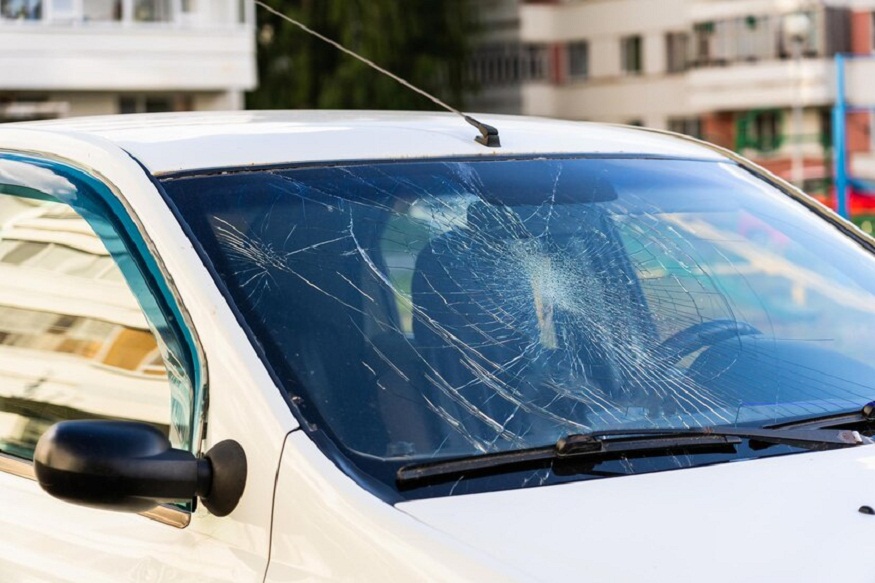A damaged windshield isn’t just an eyesore; it’s a safety hazard. The front windshield plays a critical role in your vehicle’s structural integrity and ensures a clear view of the road. Whether it’s due to a severe crack or a large chip, replacing the windshield is essential for your safety. While many people rely on professional services, understanding the replacement process is useful whether you’re considering a DIY approach or simply curious about what goes into the job.
Here’s a detailed, step-by-step guide on how to replace a front windshield, complete with safety tips and insights into when to seek professional help.
Why Replace Your Front Windshield?
Driving with a damaged windshield can be dangerous and, in some cases, illegal in the USA. Cracks and chips can obscure your vision, compromise the vehicle’s structural integrity, and worsen over time due to temperature changes or vibrations.
Modern vehicles often come with Advanced Driver Assistance Systems (ADAS) that require precise windshield installation and calibration. Proper replacement ensures these systems work effectively, keeping you and other road users safe.
If you’re located in Arizona and need professional help, consider exploring services for windshield replacement Phoenix to get reliable and expert assistance.
What You’ll Need for Windshield Replacement
Before starting the process, gather the following tools and materials:
- Replacement windshield (compatible with your car’s make and model)
- Automotive-grade urethane adhesive and primer
- Utility knife or windshield removal tool
- Suction cups for handling the glass
- Safety gloves and goggles
- Glass cleaner and microfiber cloth
- Plastic or rubber molding
Step-by-Step Guide to Replacing a Front Windshield
Step 1: Prepare the Vehicle
Park your vehicle in a flat, clean area with adequate lighting. Disconnect the car battery to avoid accidental activation of electrical components.
Step 2: Remove the Damaged Windshield
- Detach Exterior Components: Remove the windshield wipers, rubber gaskets, and trim around the windshield. Use tools like a trim removal kit for precision.
- Cut Through the Adhesive: Using a utility knife or windshield removal tool, cut through the urethane adhesive securing the windshield to the frame. Be patient to avoid damaging the vehicle’s frame.
- Lift the Windshield: Attach suction cups to the glass for better grip and carefully lift the damaged windshield out of place.
Step 3: Clean and Prepare the Frame
- Remove Old Adhesive: Use a scraper or razor blade to eliminate any residual adhesive from the frame.
- Inspect the Frame: Check for rust or damage around the frame. If needed, treat rust spots with a rust inhibitor to ensure a smooth and secure fit.
- Clean the Area: Wipe down the frame with glass cleaner or rubbing alcohol to remove dirt and debris.
Step 4: Prepare the New Windshield
- Apply Primer: Coat the edges of the new windshield and the vehicle frame with primer. This step ensures better adhesion.
- Add Adhesive: Apply a continuous bead of automotive urethane adhesive around the windshield frame.
Step 5: Install the New Windshield
- Position the Windshield: Use suction cups to carefully align and place the new windshield onto the adhesive. Ensure it fits snugly into the frame.
- Press Firmly: Apply gentle, even pressure around the edges to secure the windshield in place.
Step 6: Secure and Allow to Cure
- Reattach Trim and Components: Replace the molding, rubber gaskets, and windshield wipers.
- Let the Adhesive Cure: Follow the adhesive manufacturer’s recommended curing time, typically 24 hours, before driving. Avoid moving the car during this period to prevent misalignment or leaks.
DIY vs. Professional Windshield Replacement
Advantages of DIY Replacement
- Cost savings on labor
- Greater control over materials and tools
Drawbacks of DIY Replacement
- Lack of expertise may lead to improper installation
- Risk of leaks, wind noise, or ADAS misalignment
- Time-consuming and labor-intensive
Professional services are often the safest option, especially for vehicles equipped with ADAS or when the damage is extensive.
When to Seek Professional Help
- Advanced Technology Needs: Modern cars with ADAS require precise calibration, best handled by professionals.
- Extensive Damage: Large cracks or severe frame damage demand professional expertise.
- Lack of Tools: If you don’t have access to specialized tools, attempting DIY can be risky.
If you’re not confident in replacing your windshield on your own, consider reaching out to experts in windshield replacement Phoenix for professional assistance tailored to your needs.
How Much Does Windshield Replacement Cost?
In the USA, the cost of replacing a front windshield typically ranges between $200 and $500. The price varies based on the vehicle’s make and model, labor charges, and additional features like rain sensors or heating elements.
Safety Tips During and After Replacement
- Wear safety gloves and goggles to protect against glass shards.
- Ensure proper disposal of the damaged windshield.
- Avoid high speeds or rough roads for at least 24 hours after replacement to allow the adhesive to set.
Conclusion
Replacing a front windshield is an intricate process that plays a crucial role in maintaining vehicle safety. While DIY replacement may seem appealing, professional services often provide better results, especially for modern vehicles requiring ADAS calibration. Always prioritize quality, safety, and compliance with local regulations to ensure your windshield replacement meets the highest standards.
If you’re in Arizona and need expert help, visit windshield replacement Phoenix to ensure a hassle-free and professional experience.


